
For the discovery of new elements
-Studying elements that do not exist in nature and unraveling the mystery of matter
Interview with Dr. Pierre Brionnet, Superheavy Element Research Group
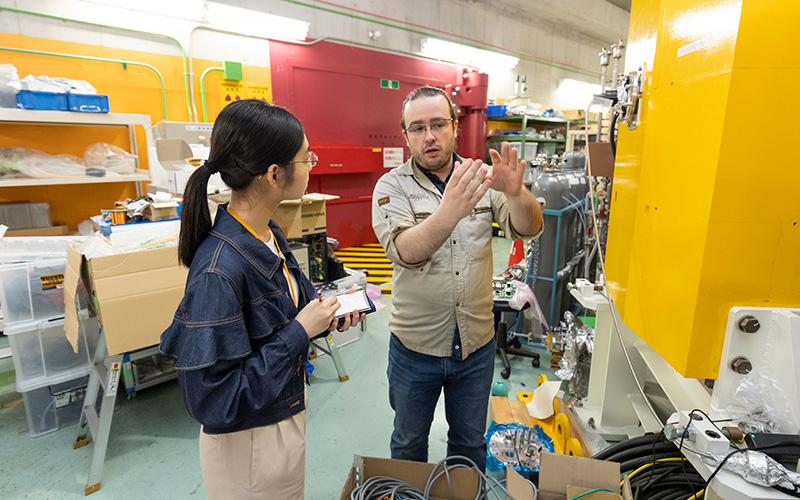
What is Dr. Pierre Brionnet’s research about?
Dr. Brionnet is a Postdoctoral Researcher at the Superheavy Element Device Development Team of the Superheavy Element Research Group. He is involved in the synthesis of new elements. Currently, 118 elements have been discovered, and he and his team are attempting to synthesize a new 119th element by bombarding curium with vanadium using an accelerator. Since the 119th element is very unstable (can only exist for a very short time), they are trying to increase the probability of its formation as much as possible, to detect it reliably, and to measure it more precisely.
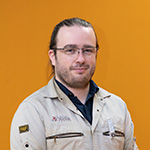
Born in France, Dr. Brionnet received his PhD (Nuclear Physics) from the University of Strasbourg in 2017 and came to Japan in 2018. He joined RIKEN as a Postdoctoral Researcher the same year. His hobbies include video games, music, and watching movies/anime, and he loves Ghibli. His other interests range from watching rugby to hiking, skiing, and touring.
Q1How do you conduct your research?
Brionnet:We are trying to create the 119th element by bombarding vanadium-51 (51V: atomic number 23, neutron number 28) accelerated by an accelerator, on curium-248 (248Cm: atomic number 96, neutron number 152). Here, the accelerated high-speed nucleus is called the beam, and the one being bombarded is called the target. We chose vanadium-51 and curium-248 because they offer a good balance between the availability of high-intensity beams and target material and the possibility of producing the 119th element.
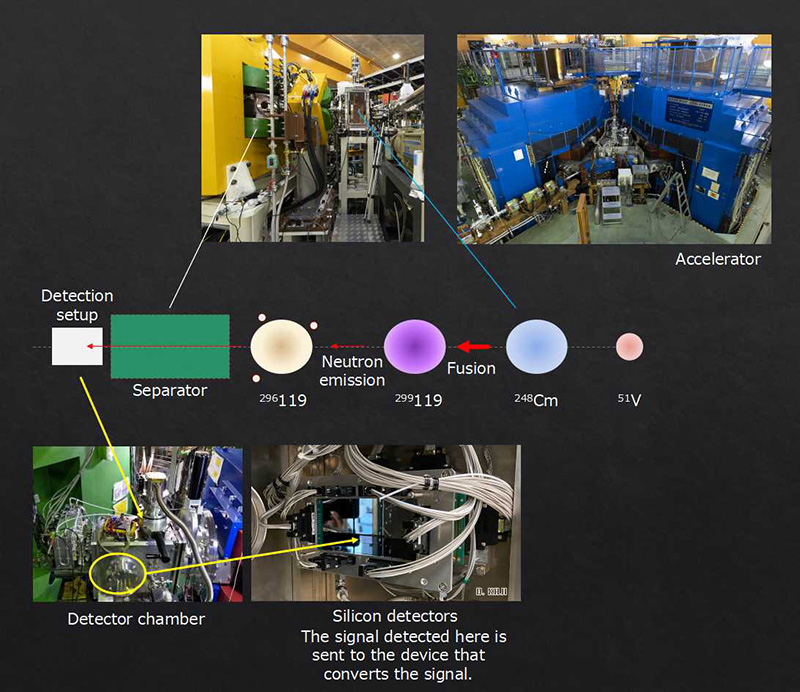
Equipment for synthesis and detection of new elements. The accelerator in the upper right photo accelerates vanadium. Vanadium accelerated from the right side of the upper left photo passes through a vacuum tube and collides with curium (in the box with a transparent window in the center of the photo). After the collision, the stream of newly produced nuclei is bent using an electromagnet (green in the left photo), and only the target nuclei are collected and sent to the detector (bottom photo). When vanadium-51 and curium-248 fuse as intended, the 119th element is produced.
The element that was created is very unstable and quickly decays one after another, emitting alpha particles (helium nuclei with two protons and two neutrons). The energy emitted during decay and the time it takes to decay are unique to each element, so by measuring them, we can determine which element was created. We predict that the frequency of new element production is once every four to six months.
Q2What are some of the innovations in your experiments?
Brionnet:To create unstable elements, high energy is required, and the beam speed must be fast enough. However, if the beam speed is too fast, the elements will break apart when they hit the target, making it impossible to produce elements with large atomic numbers. If the beam speed is too slow, positively charged nuclei will repel each other and not fuse. The amount of energy must be determined in a balanced manner.
In addition, after the beam collision, not only the target element but also many lighter elements are produced, so if all of them are detected, a lot of noise will be generated. In order to reduce such noise as much as possible, only the target particles are sent to the detector by “sieving” by mass. The detector is divided into 64 x 128 squares (vertical x horizontal), and it is possible to detect the particles on each intersection square. In this way, the location of the element sought can be identified, and the energy and time of decay can be accurately measured. Since the signals obtained by the detector cannot be analyzed as they are, a device (see photo) is required to convert the signals. I have been responsible for the development of this device for the past four years. It enables us to make observations on the nanosecond (one billionth of a second) scale, which is necessary to measure the decay of elements with large atomic numbers.
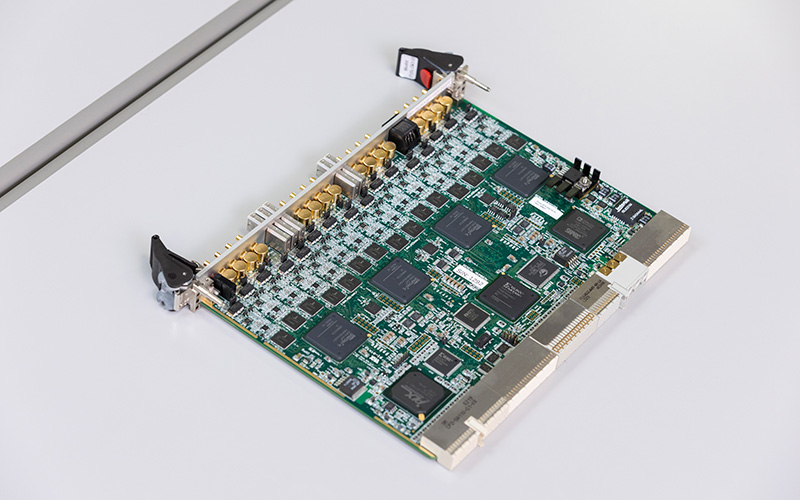
The signal obtained by the detector is sent from the gold-colored part on the left side of the photo, and is converted by a computer attached to the board.
Q3Why did you decide to do research in Japan?
Brionnet:When I was in the PhD course, there was a joint research project in France and Japan, so I came to the Nishina Center. I became interested in the work we did together there and decided to join the center as a Postdoctoral Researcher after completing my PhD course.
The Nishina Center has the conditions necessary for the production of new elements, such as the ability to conduct long-term experiments, and the very high quality of the beams. This is the only accelerator facility of its kind in the world.
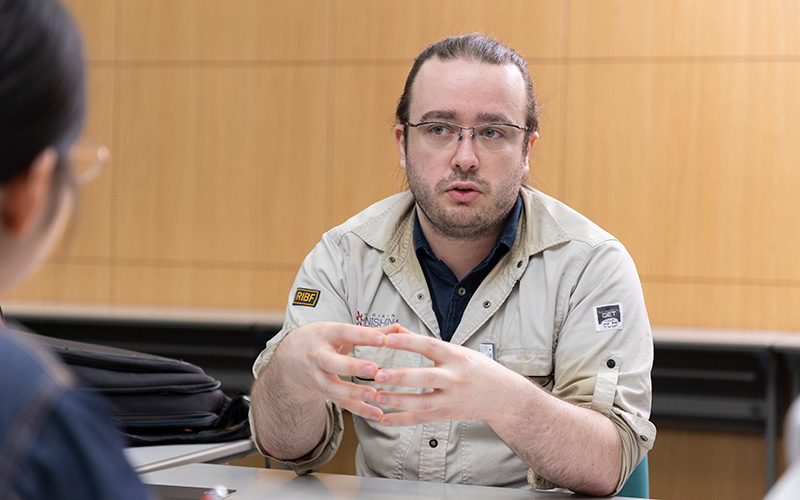
Q4What does the discovery of new elements lead to?
Brionnet:The new element itself will probably never be used directly for industrial purposes, since it can only exist for about 1ms (one thousandth of a second) after it is created. However, the discovery of new elements will lead to a better understanding of matter as a whole. Although theoretically there are about 10,000 different isotopes (elements of the same element but different masses), only about one-third of these, or about 3,400, have been discovered to date. The current laws for the elements are based only on that amount of data. By creating new elements, we will be able to obtain more data and learn more about the materials around us. Also, if we can understand how radioactive elements decay, it will lead to industrial applications such as nuclear power generation.
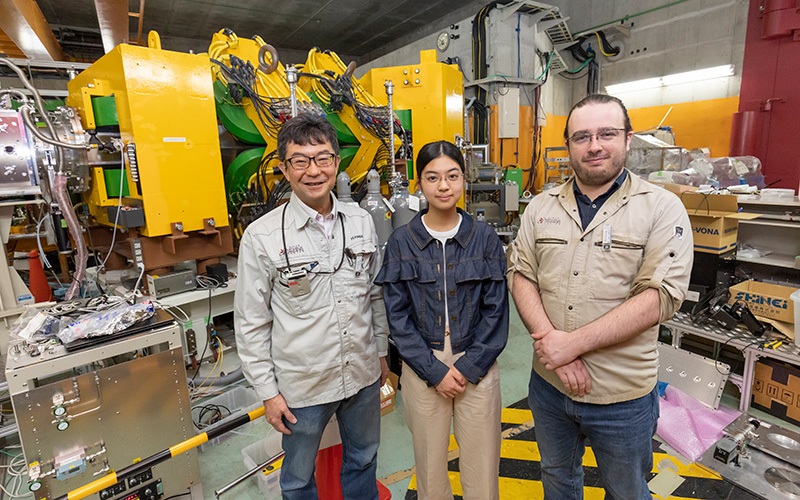
On the left is Hiromitsu Haba, Director of the Superheavy Element Research Group, who supported our interview.
(Interviewed in April, 2023)

After the interview
During the interview, when I asked him why he decided to pursue a career in science instead of engineering, he said, “Pure science can be driven by my own passion.” I have been struggling to imagine my future career path, but I was glad that I could feel Dr. Brionnet’s passion for research through this interview and understand the people doing basic research more deeply. Thank you very much for this valuable experience.


 Ion Beam Breeding Group
Ion Beam Breeding Group Nuclear Many-body Theory Laboratory
Nuclear Many-body Theory Laboratory Instrumentation Development Group
Instrumentation Development Group Radioactive Isotope Physics Laboratory
Radioactive Isotope Physics Laboratory Spin Isospin Laboratory
Spin Isospin Laboratory Nuclear Spectroscopy Laboratory
Nuclear Spectroscopy Laboratory Accelerator Basic Research Department
Accelerator Basic Research Department RI Application Research Group
RI Application Research Group